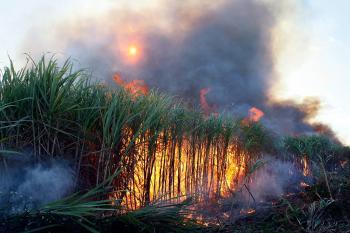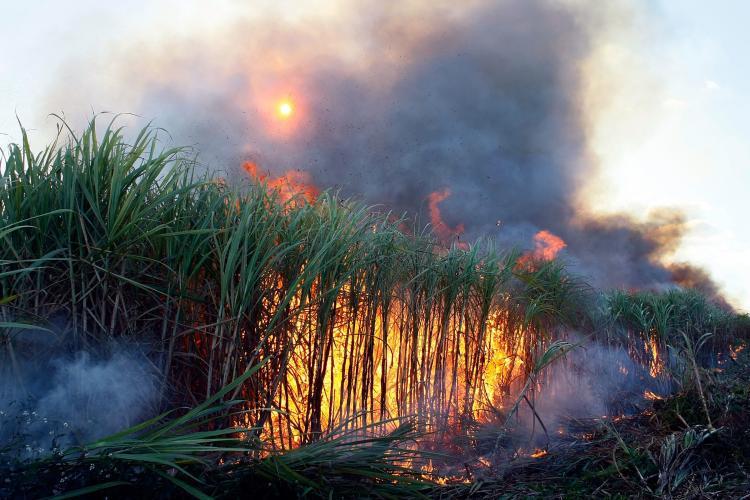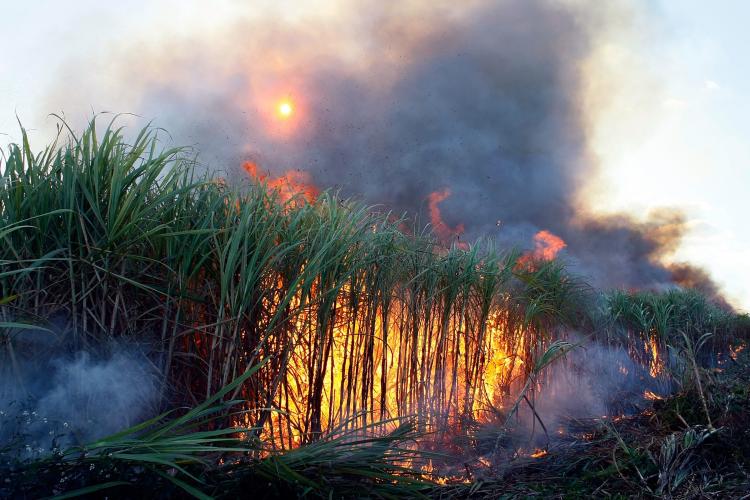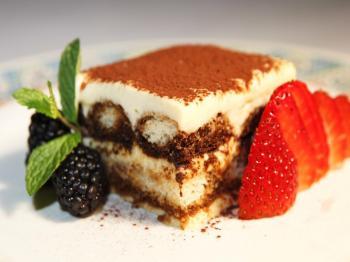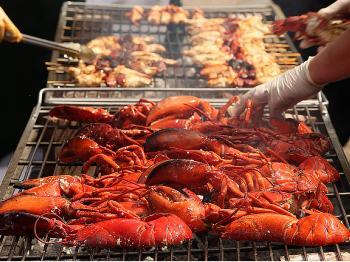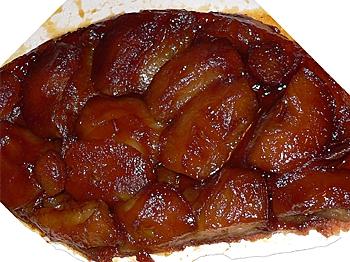Sugarcane is a perennial grass of the genus Saccharum. It is cultivated for its juice, from which sugar is processed. It is originally from tropical South Asia and Southeast Asia. Different species likely originated in different locations. Most present-day commercial canes are the offsprings or hybrids of the species Saccharum officinarum, which was developed from a wild cane species. Sugarcane cultivation requires a tropical or subtropical climate, with a minimum of 24 inches of annual rainfall.
Sugarcane is propagated from cuttings, rather than from seeds; although certain types still produce seeds, modern methods of stem cuttings have become the most common method of reproduction. Each cutting must contain at least one bud, and the cuttings are usually planted by hand. Once planted, a stand of cane can be harvested several times. After each harvest, the cane sends up new stalks, called ratoons. Usually, each successive harvest gives a smaller yield, and eventually the declining yields justify replanting. Depending on agricultural practice, 2 to 10 harvests may be possible between plantings.
Crystallized sugar was reported 5,000 years ago in India. Until the 1930s, the main types of sugarcane grown in India were the “thin” canes. They were well suited to the North Indian climate, though yields were fairly low. Thicker varieties of sugarcane were brought in from the West Indies, and the area under sugarcane was greatly expanded. Various hybrids were developed leading to a doubling of cane production in the Indian subcontinent. In India, sugarcane is sold as jaggery and is also refined into sugar, primarily for consumption in tea and sweets, and for the production of alcoholic beverages. Uses of sugarcane include the production of sugar, molasses, rum, soda, cachaça (the national spirit of Brazil), and ethanol. The bagasse that remains after sugarcane crushing may be burned to provide both heat—used in the mill—and electricity, typically sold to the electricity grid. It may also, because of its high cellulose content, be used as raw material for paper, cardboard, and eating utensils branded as “environmentally friendly,” as it is made from a byproduct of sugar production.
Brazil is another major grower of sugarcane, which is used to produce sugar and ethanol used in making gasoline-ethanol blends (gasohol) for fuel. Sugarcane is still grown extensively in the Caribbean. The plant was first brought by Christopher Columbus during his second voyage to the Americas, initially to Hispaniola (modern-day Haiti and the Dominican Republic). Sugarcane remains an important part of the economy of Belize, Barbados, Haiti, the Dominican Republic, Guadeloupe, Jamaica, and other islands.
Sugarcane is harvested mostly by hand. Hand harvesting accounts for more than half of the world’s production, and is especially dominant in the developing world. Sometimes it is harvested mechanically. When harvested by hand, the field is first set afire. The fire burns away dry, dead leaves, killing any venomous snakes hiding in the crop, but leaving the stalks and roots unharmed. With cane knives or machetes, harvesters then cut the standing cane just above the ground. A skilled harvester can cut 1,000 pounds of sugarcane in an hour.
In a sugar mill, sugarcane is washed, chopped, and shredded by revolving knives. The shredded cane is repeatedly mixed with water and crushed between rollers. The collected juices (called garapa in Brazil) contain 10 to 15 percent sucrose. The remaining fibrous solids, called bagasse, are burned for fuel. Bagasse makes a sugar mill self-sufficient in energy; the surplus bagasse can be used for animal feed, paper manufacture, or burned to generate electricity.
The cane juice is next mixed with lime to adjust its pH to 7. This mixing arrests sucrose’s decay into glucose and fructose, and precipitates some impurities. The mixture then sits, allowing the lime and other suspended solids to settle, and the clarified juice is concentrated in a multiple-effect evaporator to make a syrup about 60 percent sucrose by weight. This syrup is further concentrated under vacuum until it becomes supersaturated, and then seeded with crystalline sugar. Upon cooling, sugar crystallizes out of the syrup. A centrifuge is used to separate the sugar from the remaining liquid, molasses. Additional crystallizations may be performed to extract more sugar from the molasses. The molasses remaining after no more sugar can be extracted from it in a cost-effective fashion is called blackstrap.
Raw sugar has a yellow to brown color. If a white product is desired, sulfur dioxide may be bubbled through the cane juice before evaporation. This chemical bleaches many colored impurities into colorless ones. Sugar bleached white by this sulfitation process is called “mill white,” “plantation white,” and “crystal sugar.” This form of sugar is the form most commonly consumed in sugar-producing countries.
In sugar refining, raw sugar is further purified. It is first mixed with heavy syrup and then centrifuged clean. This process is called “affination,” and its purpose is to wash away the outer coating of the raw sugar crystals, which is less pure than the crystal interior. The remaining sugar is then dissolved to make a syrup about 70 percent solids by weight.
To produce granulated sugar, in which the individual sugar grains do not clump together, sugar must be dried. Drying is accomplished first by drying the sugar in a hot rotary dryer, and then by conditioning the sugar by blowing cool air through it for several days.
Sugarcane is propagated from cuttings, rather than from seeds; although certain types still produce seeds, modern methods of stem cuttings have become the most common method of reproduction. Each cutting must contain at least one bud, and the cuttings are usually planted by hand. Once planted, a stand of cane can be harvested several times. After each harvest, the cane sends up new stalks, called ratoons. Usually, each successive harvest gives a smaller yield, and eventually the declining yields justify replanting. Depending on agricultural practice, 2 to 10 harvests may be possible between plantings.
Crystallized sugar was reported 5,000 years ago in India. Until the 1930s, the main types of sugarcane grown in India were the “thin” canes. They were well suited to the North Indian climate, though yields were fairly low. Thicker varieties of sugarcane were brought in from the West Indies, and the area under sugarcane was greatly expanded. Various hybrids were developed leading to a doubling of cane production in the Indian subcontinent. In India, sugarcane is sold as jaggery and is also refined into sugar, primarily for consumption in tea and sweets, and for the production of alcoholic beverages. Uses of sugarcane include the production of sugar, molasses, rum, soda, cachaça (the national spirit of Brazil), and ethanol. The bagasse that remains after sugarcane crushing may be burned to provide both heat—used in the mill—and electricity, typically sold to the electricity grid. It may also, because of its high cellulose content, be used as raw material for paper, cardboard, and eating utensils branded as “environmentally friendly,” as it is made from a byproduct of sugar production.
Brazil is another major grower of sugarcane, which is used to produce sugar and ethanol used in making gasoline-ethanol blends (gasohol) for fuel. Sugarcane is still grown extensively in the Caribbean. The plant was first brought by Christopher Columbus during his second voyage to the Americas, initially to Hispaniola (modern-day Haiti and the Dominican Republic). Sugarcane remains an important part of the economy of Belize, Barbados, Haiti, the Dominican Republic, Guadeloupe, Jamaica, and other islands.
Sugarcane is harvested mostly by hand. Hand harvesting accounts for more than half of the world’s production, and is especially dominant in the developing world. Sometimes it is harvested mechanically. When harvested by hand, the field is first set afire. The fire burns away dry, dead leaves, killing any venomous snakes hiding in the crop, but leaving the stalks and roots unharmed. With cane knives or machetes, harvesters then cut the standing cane just above the ground. A skilled harvester can cut 1,000 pounds of sugarcane in an hour.
In a sugar mill, sugarcane is washed, chopped, and shredded by revolving knives. The shredded cane is repeatedly mixed with water and crushed between rollers. The collected juices (called garapa in Brazil) contain 10 to 15 percent sucrose. The remaining fibrous solids, called bagasse, are burned for fuel. Bagasse makes a sugar mill self-sufficient in energy; the surplus bagasse can be used for animal feed, paper manufacture, or burned to generate electricity.
The cane juice is next mixed with lime to adjust its pH to 7. This mixing arrests sucrose’s decay into glucose and fructose, and precipitates some impurities. The mixture then sits, allowing the lime and other suspended solids to settle, and the clarified juice is concentrated in a multiple-effect evaporator to make a syrup about 60 percent sucrose by weight. This syrup is further concentrated under vacuum until it becomes supersaturated, and then seeded with crystalline sugar. Upon cooling, sugar crystallizes out of the syrup. A centrifuge is used to separate the sugar from the remaining liquid, molasses. Additional crystallizations may be performed to extract more sugar from the molasses. The molasses remaining after no more sugar can be extracted from it in a cost-effective fashion is called blackstrap.
Raw sugar has a yellow to brown color. If a white product is desired, sulfur dioxide may be bubbled through the cane juice before evaporation. This chemical bleaches many colored impurities into colorless ones. Sugar bleached white by this sulfitation process is called “mill white,” “plantation white,” and “crystal sugar.” This form of sugar is the form most commonly consumed in sugar-producing countries.
In sugar refining, raw sugar is further purified. It is first mixed with heavy syrup and then centrifuged clean. This process is called “affination,” and its purpose is to wash away the outer coating of the raw sugar crystals, which is less pure than the crystal interior. The remaining sugar is then dissolved to make a syrup about 70 percent solids by weight.
To produce granulated sugar, in which the individual sugar grains do not clump together, sugar must be dried. Drying is accomplished first by drying the sugar in a hot rotary dryer, and then by conditioning the sugar by blowing cool air through it for several days.

